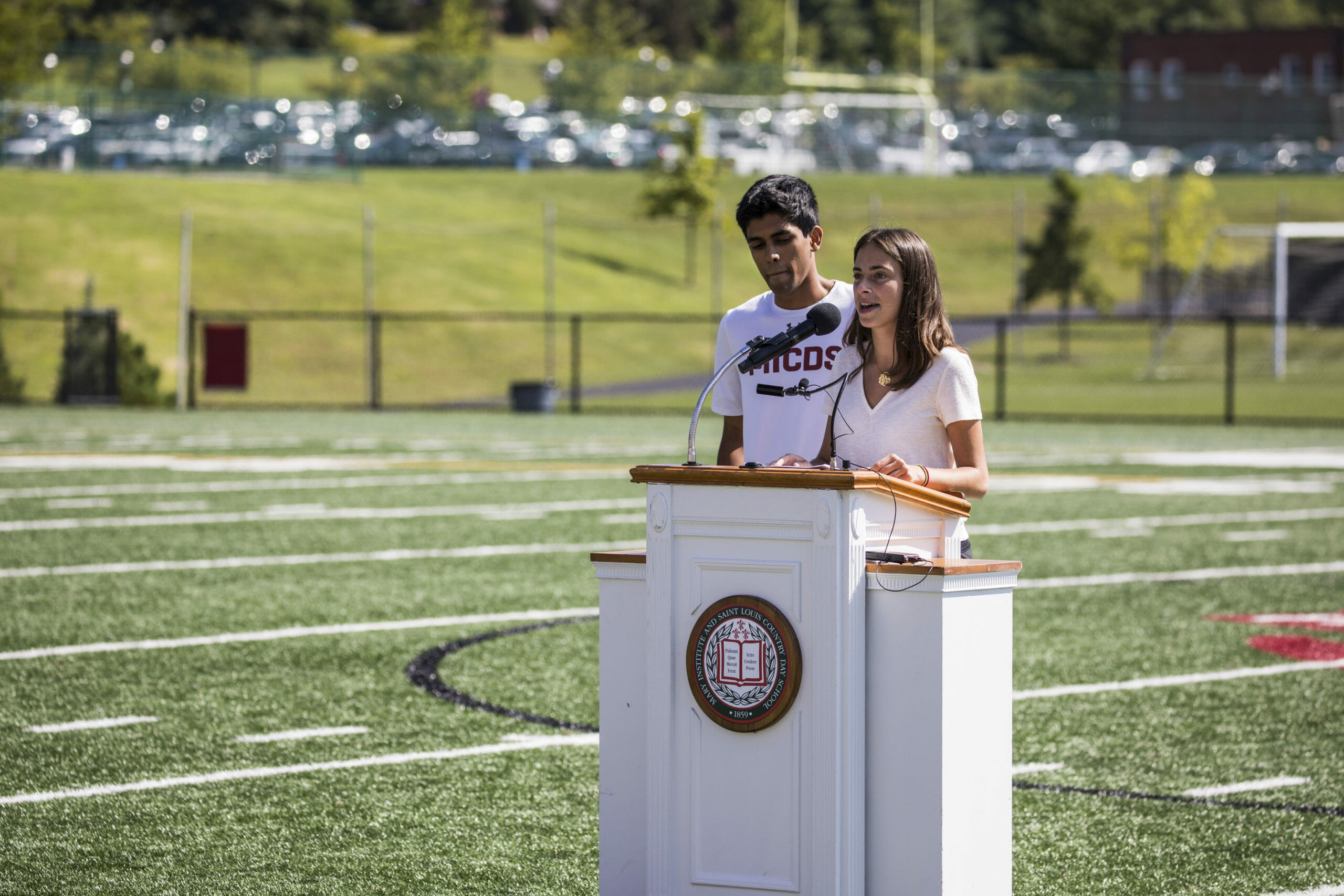Student Leadership From a Distance
By Tanay Chandak ’20 and Meredith Goldberg ’20, Student Council Co-Heads
Student leadership has always been defined within the bounds of precedent; leaders have used past school years as a reference, building off preceding government styles while implementing unique additions. Physical connections have consistently led to cultivating new and exciting ideas for the student body – carpe diem, field day, thank you notes to faculty – but the idea of virtual learning has led to a unique situation for our government that is yet to be fully lived. In the past, MICDS, like any school, has experienced the mild spread of various communicable diseases, but the new COVID-19 crisis has provided an especially unique setting for student government and for our student body overall.
When we first heard rumors in early March about schools shutting down, we were doubtful and kept hope that as seniors, we would be able to live out the supposed greatest times of our high school lives. More importantly, however, we were especially excited because, as co-heads of the MICDS Student Council, we had noteworthy activities planned for the second half of our last trimester. As we headed into spring break, our branch aimed to continue working, ensuring that these ideas became a reality. The only problem was that all of these projects relied on our physical presence on campus after spring break. When we first heard about the School’s campus closure, we were definitely distraught as seniors; however, the added weight of losing arguably the greatest activities for our School, namely those our year would be remembered by, was especially disheartening. We are still hopeful that the next student council continues these ideas into their leadership.
Though there was only a month left in our tenure, we wanted to make sure that we maintained the mission of the MICDS Student Council – providing a voice for and connecting the student body. Therefore, we sought to continue assemblies and spirit week traditions in an online forum.
Assemblies have always been a time for growth as a community; we have shared our School’s proudest moments, welcomed our most esteemed alumni, and awarded and received significant honors. Assemblies, especially for the upper grades, have developed into a reliable time where everyone in the MICDS community could meet as a body. As the emcees of the assemblies, we were in no position to remove that feeling – and thus, we worked to enable virtual assemblies with videos and engaging content for our student community. Most, if not all, of the information we shared in virtual assemblies could be easily communicated in a single document or email which would have taken less time and effort to compile and view. However, as we have dedicated a time of day to view these new virtual assemblies, each student subconsciously knows and feels that their peers are watching the same video concurrently. In that respect, there is still that feeling of unity amongst the School. Realistically, there is no way to be in a physical or virtual room with the entire student body at one time, so if we are able to use other methods to instill that same feeling, we feel we have accomplished our goals as a student council. In fact, faculty and students alike have realized the nostalgic and bonding force of assemblies and have thus individually expressed gratitude for maintaining the positive spirit of the assemblies, despite it being slightly awkward and redundant.
In addition to assemblies, we did not want to suspend spirit week because it was a valuable asset in the community. Because school in a virtual setting technically doesn’t require MICDS dress code, there isn’t the same fun and community in dressing down since it has become a regular activity. Hence, we decided to continue our tradition of spirit week to add more variety. After receiving the idea from our faculty sponsors, we were excited to contribute themed options that would elicit participation and fun classroom discussions. We wanted to relive the organic classroom discussion that traditional spirit days called for, where teachers and students left a more professional setting for an open and comforting one. With the communication problems that virtual classes naturally present, it can be challenging to have those non-academic conversations. We have found that spirit day – be it jerseys, hats or music – have spawned inspiring discussions, and the strong participation has been indicative of the students’ need for more class- and school-wide activities amidst this new and, at times, stressful way of learning.
In this new environment, student leadership may never be the same as before. However, we have been finding time to unite the student body and continue traditions because we want to do our best to maintain the feeling of community. While the virtual environment may never provide that same feeling of connection, we hope that our efforts have lessened the disparity between an in-person and virtual learning environment.
